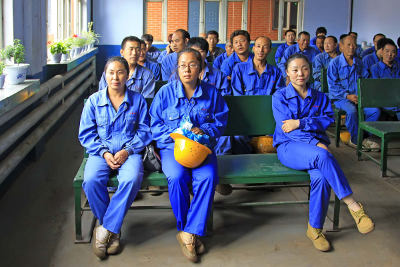China is known for having a significant disparity with regard to how many more men than women make up the country’s population. One would assume similar numbers would directly translate over into the manufacturing setting – China’s largest industry. However, that is far from the case because, although the gap is narrowing, women still make up the majority of factory workers in China.
One only needs to take a brief walk through a factory to realize that most individuals working the line are females. This becomes even more prevalent in soft line manufacturing such as fabric, garment, and footwear factories where the female to male ratio is often as high as 4 to 1. This difference is sometimes caused by an inability for women to move up in position because of barriers placed over them by the industry. Below are two types of challenges women commonly face throughout their time while working in the manufacturing industry in China.
Lack of Training for Females
Ongoing training during the time of employment in a factory is close to nonexistent when it comes to female workers. When the manufacturing boom in China first started just over 15 years ago, the majority of factories were solely focused on getting their hands on cheap labor. They only sought basic skills from their employees. Therefore, factory management never provided any type of vocational training to their workers. Occasionally, men would have a “master worker” appointed to instruct them and teach them other skills. But this kind of opportunity was seldom offered to women. Women in factories have since been working at the most basic routine level because of this standard.
Recently, some global brands like Walmart have been setting up efforts to change this situation. In 2014, Walmart put in place the first Female Worker Training Program in Shenzhen, Guangdong. The program aims to assist female workers in moving up the ladder and obtaining management positions. Nine factories in Guangdong and Fujian are currently participating. Training or the lack thereof, is an aspect of Chinese factory workers’ life that affects women in the manufacturing industry.
Working Conditions for Chinese Factory Workers
“Sweatshops” have garnered significant media exposure globally over the past decade. In part due to poor work conditions and use of underage labor in sweatshops, multinational corporations have begun making an effort to improve conditions for Chinese factory workers that manufacture their products. Other companies have taken on strict policies to not work with suppliers which have poor working conditions in their factories.
Nevertheless, working conditions continue to be far from respectable and female workers are among those most affected on a daily basis. One of the most infamous recent cases has been the Foxconn suicides. In 2010, there were 18 attempted suicides by workers as a result of longer working hours and poor conditions. Workers who did not meet their quota were reportedly not allowed to rest.
Sweatshops also make women more prone to sexual harassment, commonly from the male-dominated management level. Many such incidents of harassment go unreported due to the system set in place where workers receive demerits for leaving their work station, even if it is to report an incident pertaining to sexual harassment.
Conclusion
Even with a female majority among Chinese factory workers, female workers still face significant obstacles on the road to climbing the industry ladder. The recent developments in the placement of female training programs and improving working conditions are steps in the right direction. China still has a long way to go, but with the placement of management training initiatives for women and an increased awareness of social compliance, the horizon is looking a bit brighter.






